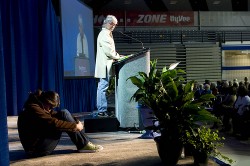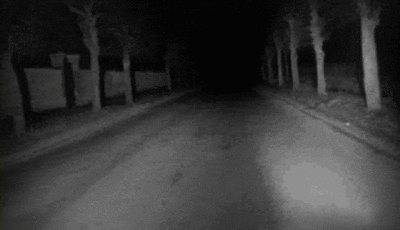A co-talk by Grant Hutchinson and Carina Lof
Sick Kids R Us
Children have taken the poison of dukkha and have lost their senses. They are trapped in delusion. Even when the father, whom the children love and respect, prepares medicine, only some of them take it, the others can’t recognize its qualities.
Seeing as Imagination
Perhaps the inability to perceive the qualities of a remedy amounts to a crisis of imagination. Take sight for example. Everything we see is our imagination. technically, sight is photons blasting against our neurons and all of this data must be organized by the brain to create meaning and form. But the imagination is routinized to perceive things in a way that fits with our concepts and notions about them. So actually we see only what we expect to see. When we hold on to our notions and our stories too tightly, there is no room to see things as they are.

In the parable, the doctor/father meets his patients/children where they are, making them think he has died so they will consider taking the medicine, which they finally do. The response is geared specifically to the situation, it is a creative engagement with the conditions as they are arising. In this way the Buddha becomes an artist. We are asked through these skilfull means to also become artists. Can we wake up to the ingredients in our lives as they arise without hankering for the ones we don’t have? How do we cook our lives with what we already have in our cupboards, including everything?
Practice
Practice means staying in the middle of our own buddha and bodhisattva potential; to know that we are in the world but to also imagine the buddha capacity of interconnection that prevents us from getting stuck in our own viewpoint, and from the dulling or even loss of our senses.
It is the poison in our veins that stops up our senses and prevents us from seeing that we are actually on Eagle Peak where the Buddha resides and teaches. Our dull senses cause us to see through the burning veil of our own storylines. When the senses organs are functioning then we perceive that the Buddha is there preaching the dharma. Or maybe we see the buddha capacity for awakening presenting itself through all the phenomena of the world in every moment. “Grasses and trees, fences and walls demonstrate and exalt it for the sake of living beings; and in turn, living beings, both ordinary and sage, express and unfold it for the sake of grasses and trees, fences and walls.”
For asamkhya kalpas
constantly I have dwelled on Holy Eagle Peak
and in various other places.
When living beings witness the end of a kalpa
and all is consumed in a great fire,
this, my land, remains safe and tranquil,
constantly filled with heavenly and human beings.
(Lotus Sutra transl. Burton Watson, pg. 230)
If every exhale is the end of a kalpa, we can either get trapped in the parched viewpoint of me and mine which believes that change happens to us (in which case we burst into flames), or we can polish our senses to see that, at the same time that our storyline is playing out, we were never separate from change and that there is no fixed self to whom change is happening. The end of a kalpa is not just the end of a glacial age; it is not judgment day. It is when things change, when disappointment arises, when the job falls through or the relationship sours. Or maybe it’s just the end of the exhale, but it is when our habit patterns brush up against impermanence in a way that everything seems to catch on fire.
Path
A path is often envisioned as something constructed, such as a road, upon which we can walk. Batchelor sees it as a place without hindrance, something that is unobstructed. Space is that which has nothing in it, an “absence of resistance’ (p 71); a path is likewise “a space that offers no resistance” (ibid), allowing one to walk upon it, offering freedom to move. Mara, on the other hand, is that which obstructs, which blocks movement. It is our compulsions, our endless thoughts, our feeling of separateness that block our movement and prevent us living in true freedom. It is “our” Mara that hinders our path. in our lives, each phenomenological experience we have via our senses can wake us up. The way we move through a room and dwell in sensations is awakening. Everything in the saha world could be an awakening bodhisattva – this includes trees and earthworms, and pain in the back, the terminal diagnosis, the rejection.

Saha
Saha equals earth, shares its root with bearing and enduring. It is also defined as samasara – it is the realm in which the buddha wakes up and also the realm in which the buddha instructs living beings.
Habits
Our lives are surrounded by potential narrative threads, each full of complexity. By habit we move through limited ones. I have a usual route of biking to the market. I have a favorite route I take when walking to the park. How to undo these habit energies? Twyla Tharp suggests that before doing anything creative, to assume the shape of an egg. Pull your knees up to your chin, lower the head to the knees. Move when you feel you need to, the egg is an always changing, in motion experience.

Timeless Time
The Buddha’s lifespan itself has been used as expedient means. If the story of his death wasn’t circulated, it would hinder practice, people will fail to put down good roots. How is the fear of death an expedient means for us? By realizing impermanence we have love and appreciation for what is right in front of us, what we are in the midst of. We cherish this moment more because it is impermanent. This moment, this tree, this face, and me: a Buddha and a Buddha.
Sometimes we can have solitary buddha and buddha experiences. For instance when the buddha of awareness sees the buddha of our human mind at work, weaving stories, and when we realize the quality of awakening is not present, suddenly it is a buddha and a buddha! and we can appreciate our life.
Dogen’s talk on Nirvana Day – a remembering of the day the Buddha awakened. :This night Buddha entered nivrvana under the twin sala trees, and yet it is said tha he always abides on Vulture Peak. When can we meet our compassionate father? Alone and poor, we vainly remain in this world… amid love and yearning, what can this confused son do? I wish to stop these red tears and join in wholesome action.”

Coming Back
So we come back, come back always to the body, the saha body to the endless space and time of the body to immanent death. Stephen Batchelor: “Since death alone is certain and the time of death uncertain, what should I do?” What does impermanence feel like in your bones? What is the feeling of no time passing? Can we hold these both?
It Was Like This: You Were Happy by Jane Hirschfield
It was like this: you were happy, then you were sad,
then happy again, then not.
It went on.
You were innocent or you were guilty.
Actions were taken, or not.
At times you spoke, at other times you were silent.
Mostly, it seems you were silent — what could you say?
Now it is almost over.
Like a lover, your life bends down and kisses your life.
It does this not in forgiveness –
between you, there is nothing to forgive –
but with the simple nod of a baker at the moment
he sees the bread is finished with transformation.
Eating, too, is now a thing only for others.
It doesn’t matter what they will make of you or your days:
they will be wrong,
they will miss the wrong woman, miss the wrong man,
all the stories they tell will be tales of their own invention.
Your story was this: you were happy, then you were sad,
you slept, you awakened.
Sometimes you ate roasted chestnuts, sometimes persimmons.
